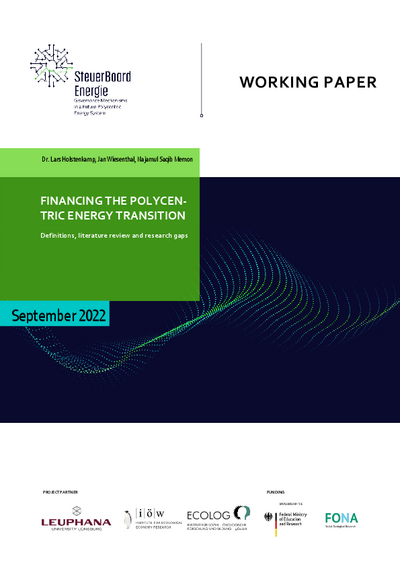Financing the polycentric energy transition Definitions, literature review and research gaps
The aim of this working paper is to review and illustrate the links between financing, energy and the current role of bottom-up models in financing the energy transition.
Transforming the energy system will require an estimated $110 trillion in global investment by 2050. The scale of the investment required makes it clear: investment will be needed by all players. An increasingly important role is played by citizens. They can invest individually and become prosumers. Prosumers consume self-generated electricity, such as homeowners who consume electricity from their own solar system. However, citizens can also organize themselves in so-called bottom-up models such as energy communities, citizen energy communities or local energy initiatives and jointly finance the investment costs.
The financing of investments can be understood in two different ways. In an energy economic sense, financing means refinancing the capital invested. In a managerial sense, financing means raising money. In this study, we provide a brief overview of the different financing instruments.
We also evaluate the existing literature on energy and financing. In doing so, we identified four perspectives that have been discussed in previous research. These include:
- Micro-level perspectives
- Policy perspectives with a focus on the sustainable finance discourse
- System-level perspectives
- Literature that examines the impact of energy sector developments on financial markets ("Energy-to-Finance")
Looking at the bottom-up models, it is clear that significant changes have taken place in recent years. Both technological advances that have facilitated distributed generation and regulatory interventions such as the Clean Energy Package have strengthened bottom-up models in recent years.



